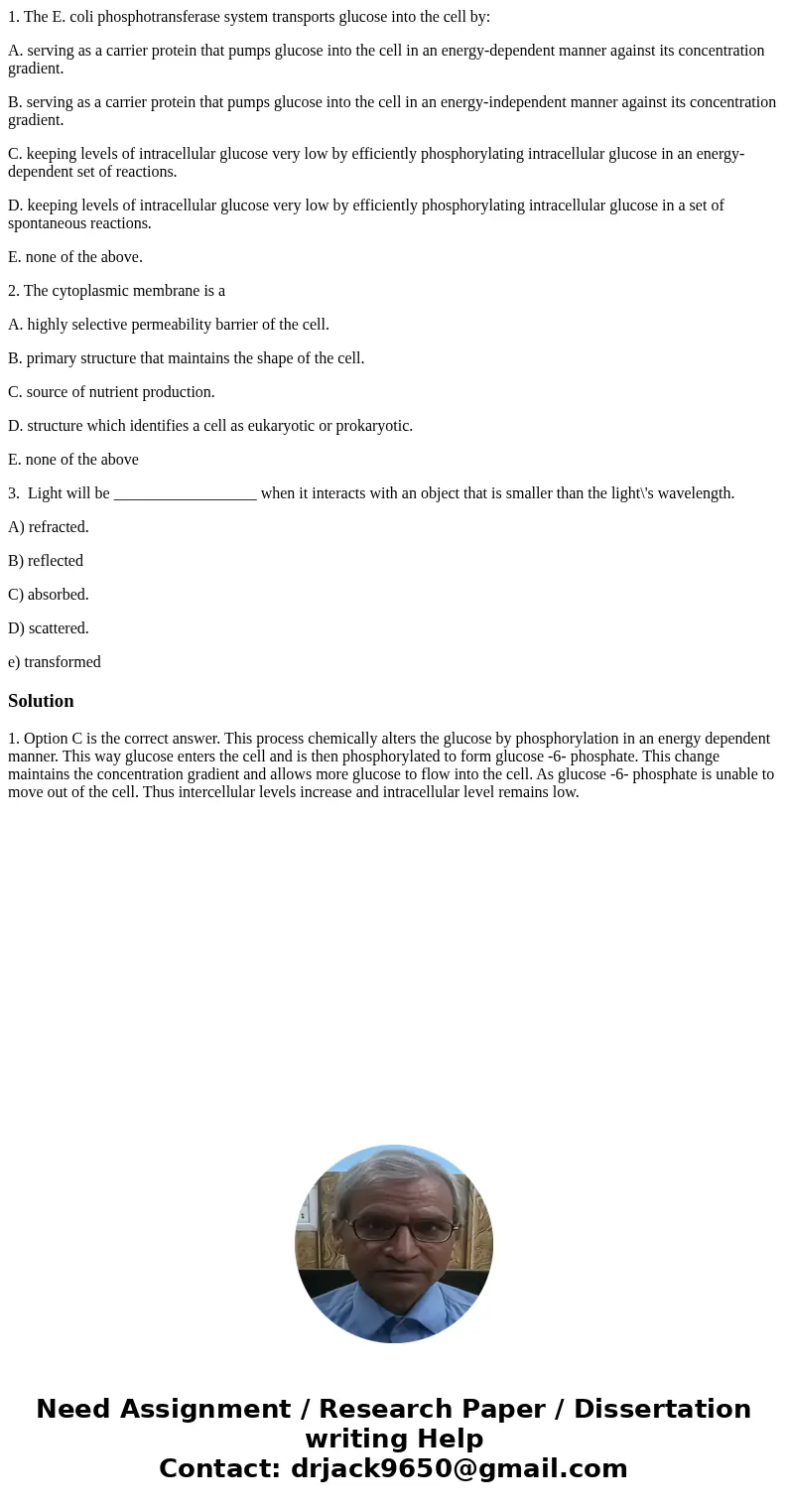1 The E coli phosphotransferase system transports glucose in
1. The E. coli phosphotransferase system transports glucose into the cell by:
A. serving as a carrier protein that pumps glucose into the cell in an energy-dependent manner against its concentration gradient.
B. serving as a carrier protein that pumps glucose into the cell in an energy-independent manner against its concentration gradient.
C. keeping levels of intracellular glucose very low by efficiently phosphorylating intracellular glucose in an energy-dependent set of reactions.
D. keeping levels of intracellular glucose very low by efficiently phosphorylating intracellular glucose in a set of spontaneous reactions.
E. none of the above.
2. The cytoplasmic membrane is a
A. highly selective permeability barrier of the cell.
B. primary structure that maintains the shape of the cell.
C. source of nutrient production.
D. structure which identifies a cell as eukaryotic or prokaryotic.
E. none of the above
3. Light will be __________________ when it interacts with an object that is smaller than the light\'s wavelength.
A) refracted.
B) reflected
C) absorbed.
D) scattered.
e) transformed
Solution
1. Option C is the correct answer. This process chemically alters the glucose by phosphorylation in an energy dependent manner. This way glucose enters the cell and is then phosphorylated to form glucose -6- phosphate. This change maintains the concentration gradient and allows more glucose to flow into the cell. As glucose -6- phosphate is unable to move out of the cell. Thus intercellular levels increase and intracellular level remains low.

 Homework Sourse
Homework Sourse